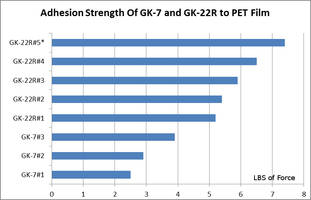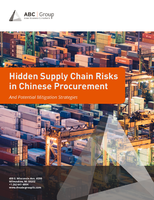Northstar Polymers Introduces New Polyurethane Gel Formulas: Sticky Pad Materials Can be Used to Manufacture Pressure Sensitive Adhesive Products
Press Release Summary:

- GK-7 material can be cast between films or on open surfaces, and can be molded in vertical molds.
- GK-22R material is curable at room temperature, and exhibits a stronger adhesion strength.
Original Press Release:
New Sticky-Pad (Reusable PSA) Polyurethane Gel Formulas GK-7 and GK-22R
Northstar Polymers has developed new 2-part thermoset polyurethane casting resin formulations, which are designed to be used to make Sticky Pads, reusable Pressure Sensitive Adhesive (PSA), and other custom products. GK-7 yields typical stickiness range of common sticky pad products such as cell phone holder and non-invasive wall-tacks, and GK-22R yields higher adhesion property for specialty applications.
Each respective formula has an adjustment method, which enables its users to adjust the stickiness/adhesion strength of the end products. With GK-7, the user can simply change the mixing ratio between part-A and part-B. With GK-22R, partB/part-C components are blended to make modified part-B.
The following data is produced from our in-house test method. 1” x 2” sticky pad samples are made. Each sample is sandwiched with two pieces of PET film and pulled to delaminate as the peak pulling force is recorded. (See the picture at the top for reference.)
The test results are expressed in the peak “pounds of force” to delaminate one side of PET off. For your reference, the stickiness of GK-7#2 is close to typical cellphone holder products.
Cohesion Strength and Tensile Strength of Materials
The failure point of delamination is either at the adhesion between the PET film and the sticky pad or the cohesion failure of the sticky pad. The above test sample did not have cohesion failure except for GK22R#5*. When the sticky pad has a higher stickiness, the overall strength including the cohesion strength weakens. This makes the sticky pad product easier to tear and leave the residue on the substrate. The chart below shows the tensile strength of the samples based on our in-house test method. The data is expressed in the pound of force in pounds per square inch (psi) based on the cross-section area of each sample when it is stretched by 10 times of the original length. All of these samples have ultimate elongation values higher than 1000% with our in-house test.
The adhesion strength of sticky pad changes depending on the surface energy or substrate. The adhesion strength is much stronger when the sticky pad is applied to substrates with high surface energy such as glass, polycarbonate, and epoxy. The adhesion strength is weaker when it is applied to a substrate with low surface energy such as polypropylene, silicone, and PTFE. Please referent to this chart for typical surface energy levels of common polymers.
Choosing the Right Material Configuration for Your Application
In the sticky pad (or reusable PSA) applications, the product not only have to provide the appropriate adhesive property but it also must come off from the substrate without a cohesive failure, which leaves a sticky residue on the substrate. Also the removing the product from cannot damage the substrate such as a painted wall. The adhesive strength needs to be controlled so that it is not too strong.
When the raw material for thermoset polyurethane-based “sticky pad” or PSA products are evaluated, it is important to determine the range of stickiness on substrates within a certain surface energy range. There is no such a material that yields exactly the same adhesion strength to various substrates with a wide range of surface energy.
Test Sample Descriptions
GK-7 is formulated in such a way the user can change the stickiness of the material by simply changing the mixing ratio between the given part-A and part-B components. The samples are made at the following ratios. The ratios are by weight.
GK-22R is formulated in such a way the user pre-mix part-B and part-C components at the desired ratio to yield the desired stickiness. Part-A and the blended part-B/C are mixed at the designated constant mixing ratio to make a casting batch. The ratios are by weight.
Formula information
GK-7 https://northstarpolymers.com/051719_PDF_Files/GEL/042420_TDS_GK-7_Standard.pdf
GK-22R https://northstarpolymers.com/051719_PDF_Files/GEL/042320_TDS_GK-22R.pdf
Contact Information:
For any questions, please contact Northstar Polymers.
Tel: 612-721-2911 (Ext. 119)
Fax: 612-721-1009
Web Site: www.northstarpolymers.com
E-Mail: info@northstarpolymers.com




